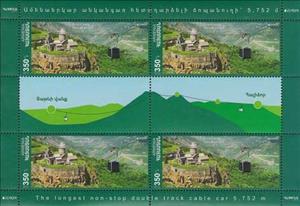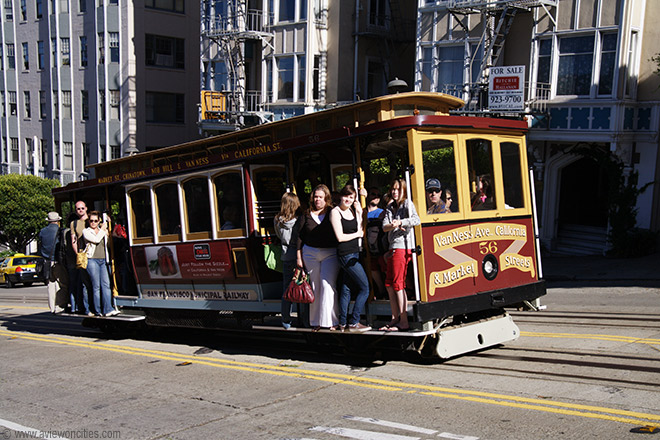Mini Sheet: Tatev Monastery (founded 895), Cable Car (2010) (Armenia 2012)
Tatev Monastery (founded 895), Cable Car (2010) (Armenia 2012)
27 December (Armenia ) within release Europa (C.E.P.T.) 2012 - Visit Armenia goes into circulation Mini Sheet Tatev Monastery (founded 895), Cable Car (2010) face value 1,400 Armenian dram
| Mini Sheet Tatev Monastery (founded 895), Cable Car (2010) in catalogues | |
|---|---|
| Michel: | Mi: AM 812KBII |
Mini Sheet is square format.
Also in the issue Europa (C.E.P.T.) 2012 - Visit Armenia:
- Mini Sheet - Tatev Monastery (founded 895), Cable Car (2010) face value 1,400;
- Full Pane - Tatev Monastery (founded 895), Cable Car (2010) face value 6*350;
Mini Sheet Tatev Monastery (founded 895), Cable Car (2010) it reflects the thematic directions:
A cable car (usually known as a cable tram outside North America) is a type of cable railway used for mass transit in which rail cars are hauled by a continuously moving cable running at a constant speed. Individual cars stop and start by releasing and gripping this cable as required. Cable cars are distinct from funiculars, where the cars are permanently attached to the cable.
A landscape is the visible features of an area of land, its landforms and how they integrate with natural or man-made features. A landscape includes the physical elements of geophysically defined landforms such as (ice-capped) mountains, hills, water bodies such as rivers, lakes, ponds and the sea, living elements of land cover including indigenous vegetation, human elements including different forms of land use, buildings and structures, and transitory elements such as lighting and weather conditions. Combining both their physical origins and the cultural overlay of human presence, often created over millennia, landscapes reflect a living synthesis of people and place that is vital to local and national identity. The character of a landscape helps define the self-image of the people who inhabit it and a sense of place that differentiates one region from other regions. It is the dynamic backdrop to people’s lives. Landscape can be as varied as farmland, a landscape park, or wilderness. The earth has a vast range of landscapes, including the icy landscapes of polar regions, mountainous landscapes, vast arid desert landscapes, islands and coastal landscapes, densely forested or wooded landscapes including past boreal forests and tropical rainforests, and agricultural landscapes of temperate and tropical regions.
Tourism is travel for pleasure or business; also the theory and practice of touring, the business of attracting, accommodating, and entertaining tourists, and the business of operating tours. Tourism may be international, or within the traveller's country. The World Tourism Organization defines tourism more generally, in terms which go "beyond the common perception of tourism as being limited to holiday activity only", as people "traveling to and staying in places outside their usual environment for not more than one consecutive year for leisure, business and other purposes". Tourism can be domestic or international, and international tourism has both incoming and outgoing implications on a country's balance of payments. Today, tourism is a major source of income for many countries, and affects the economy of both the source and host countries, in some cases being of vital importance.



